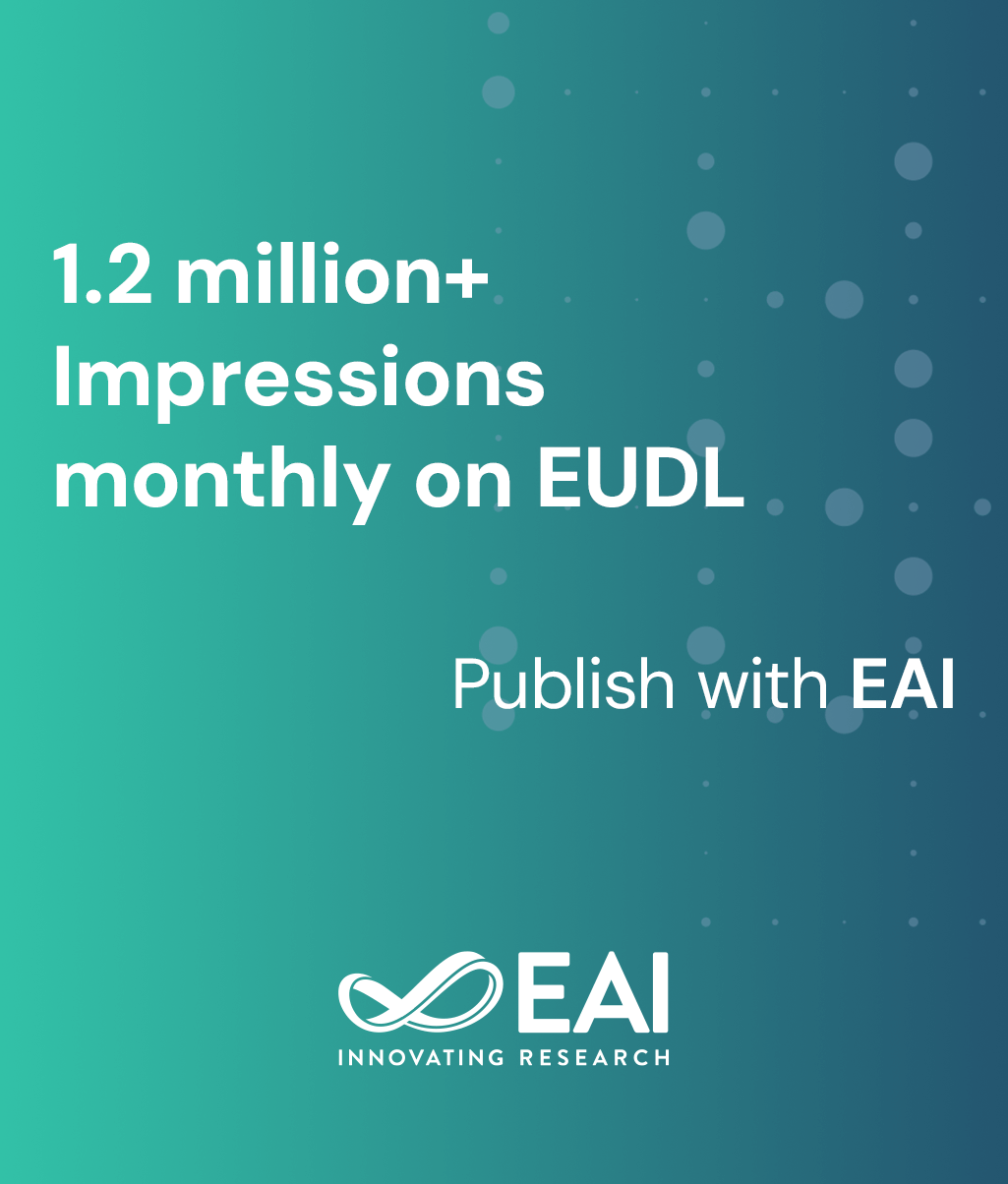
Research Article
Efficient DNA-Based Logistic Mapping Algorithm for Color Image Encryption
@ARTICLE{10.4108/eetsis.6800, author={Aya Goudjil and Aicha Benyoucef and M'Hamed Hamadouche and Mohamed Amine Riahla}, title={Efficient DNA-Based Logistic Mapping Algorithm for Color Image Encryption}, journal={EAI Endorsed Transactions on Scalable Information Systems}, volume={12}, number={2}, publisher={EAI}, journal_a={SIS}, year={2025}, month={4}, keywords={Cryptography, DNA cryptography, Encoding, Decoding, Image Security, Image encryption, Color images, Digital chaotic map, Logistic map}, doi={10.4108/eetsis.6800} }- Aya Goudjil
Aicha Benyoucef
M'Hamed Hamadouche
Mohamed Amine Riahla
Year: 2025
Efficient DNA-Based Logistic Mapping Algorithm for Color Image Encryption
SIS
EAI
DOI: 10.4108/eetsis.6800
Abstract
INTRODUCTION: Color images hold significant information and are widely used in diverse domains. The protection of these images against unauthorized access over the internet is a necessity that relies on encryption techniques. However, traditional encryption methods face challenges with the increasing capability and efficiency of quantum computing to solve complex problems. DNA cryptography is a promising field in information security, utilizing DNA molecules with massive parallelism and vast storage capacity to encode and decode information. While chaotic systems have been widely used in encryption due to their sensitivity to initial conditions and parameter values, resulting in unpredictability and significant variation. Exploiting the characteristics of DNA cryptography and chaotic systems is a promising alternative for securing data. Nevertheless, current methodologies exhibit limitations such as a small key space and weak resistance to differential attacks. OBJECTIVES: This paper addresses these gaps by proposing an RGB image encryption algorithm based on DNA cryptography and a 1D logistic map. METHODS: The proposed method randomly generates a DNA encoding/decoding table to generate the row-column permutation of the image. After the permutation of the image, the logistic map is used to generate three keys for RGB channels and seven DNA encoding-decoding rules, three are used to encode the keys into DNA sequence, the second three to encode the image RGB channel, and the last to perform the DNA-XOR operation. Finally, decode the result into integers using the DNA encoding/decoding table and generate the encrypted image. RESULTS: The analysis of the proposed technique demonstrates significant robustness against various attacks, as evidenced by metrics such as a key space exceeding 2100, an average NPCR of 99.613667%, an average UACI of 50.273742%, an entropy value approaching 8, and a strong key sensitivity. CONCLUSION: These results validate its capacity to effectively resist differential, brute-force, and statistical attacks.
Copyright © 2025 A. Goudjil et al., licensed to EAI. This is an open access article distributed under the terms of the CC BY-NC-SA 4.0, which permits copying, redistributing, remixing, transformation, and building upon the material in any medium so long as the original work is properly cited.


